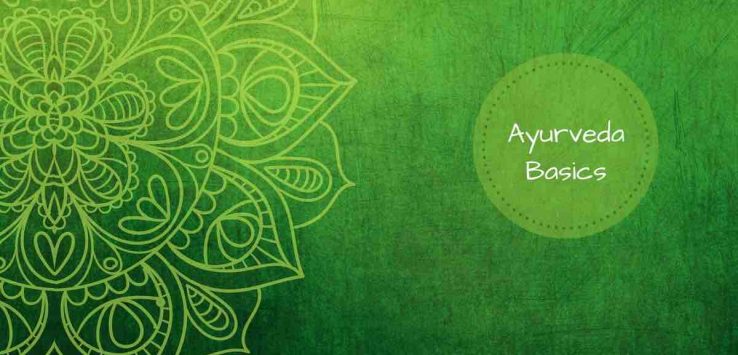- 1. The Three Doshas
- 2. Agni: The Vital Fire
- 3. Ojas & The Sapta Dhatus
- 4. Prana: The Life Force
- 5. Sattva, Rajas, And Tamas
What Is Ayurveda?
Ayurveda is believed to be at least 5,000 years old. The Ayurveda meaning is rather simple. It is a Sanskrit word that translates to “science of life”. It’s not just about using herbs as medicines, but an entire way of life focused on preventing disease rather than curing it. Many consider it the oldest intricate system of holistic health.
The origin of Ayurveda can be found in the Vedas. But the most popular text on Ayurveda is the Charaka Samhita. What is Ayurvedic medicine based on, many wonder. Well, its foundation lies in the various principles and philosophies described in the ancient texts.

What Is Ayurveda All About: Basic Terms Explained
Now that we know the Ayurveda meaning, let’s move on to some essential concepts in Ayurveda.
1. The Three Doshas
- Vata (Air + Ether) governs movement of all things in the body. It is cold, light, flexible, fast-moving, erratic, and rough.
- Pitta (Fire + Water) governs metabolism and digestion. It is oily, sharp, hot, light, moving, liquid, and acidic.
- Kapha: (Earth + water) governs structure and lubrication. It is moist, cold, heavy, dull, soft, sticky, and static.
The Ayurveda meaning is most often associated with the three doshas or body humours. All three of these doshas make us up, but the dosha in excess dominates us. Many also have a second dominant dosha. And some even suffer from aggravation of all three.
2. Agni: The Vital Fire
Agni is Sanskrit for fire. It is responsible for important functions such as digestion, metabolism, transformation, strength, and intelligence. Agni’s role in digestion is vital. Since Ayurveda deems indigestion a root cause of many illnesses, maintaining a strong agni is crucial for health.
3. Ojas & The Sapta Dhatus
When we digest food with the help of agni, the seven tissues (sapta dhatus) of the body receive nourishment in a specific order. As each dhatu forms, ojas gets released. Ojas is the opposite of ama (toxins) and is the most refined essence of the body.
- Rasa equates with plasma. It nourishes the cells.
- Rakta forms when blood cells generate.
- Mamsa results the transformation of blood into muscles.
- Medha is the fat tissue nourished by the muscles.
- Asthi results from the conversion of fat into bones.
- Majja forms when bone tissue nourishes the nerves.
- Shukhra is the reproductive fluid that contains the most refined ojas.
This entire process takes 30 days. The final product of all these steps is supreme ojas, which the body stores in the heart, and it vitalises the whole being.
4. Prana: The Life Force
What is Ayurvedic medicine important for? It helps increase as well as preserve our Prana. Prana is the life that runs through us, also called Chi in Traditional Chinese Medicine. It flows in us like electricity. A state of high and harmonious Prana brings a life of health as well as joy. Low and highly disturbed Prana brings sickness and death.

5. Sattva, Rajas, And Tamas
Sattva, Rajas, and Tamas are the essential qualities that make up everything in and around us. Like the doshas, all three exist in a combination within us. However, one dominates.
- Sattva: Brings purity, lightness, and clarity. Promotes health and calmness. In order to increase Sattva, one must lead an Ayurvedic lifestyle as well as follow a satvik diet.
- Rajas: Stimulates us and supports dynamic activities, but brings restlessness and agitation in excess.
- Tamas: Brings structure and preserves the body. But it creates delusion, ill will, drowsiness, apathy, and negative qualities in excess.
The Aim Of Ayurveda
Now can you guess, what is Ayurvedic medicine aimed at?
Ayurvedic remedies and lifestyle aim to maintain balance in all of the elements we described above, as nature intends it to be. The focus is on living in accordance with one’s dosha and in tune with nature.
So the next time someone asks you what is Ayurveda, you can share with them all these facts about the remarkable phenomenon we call human life!







Leave a Reply